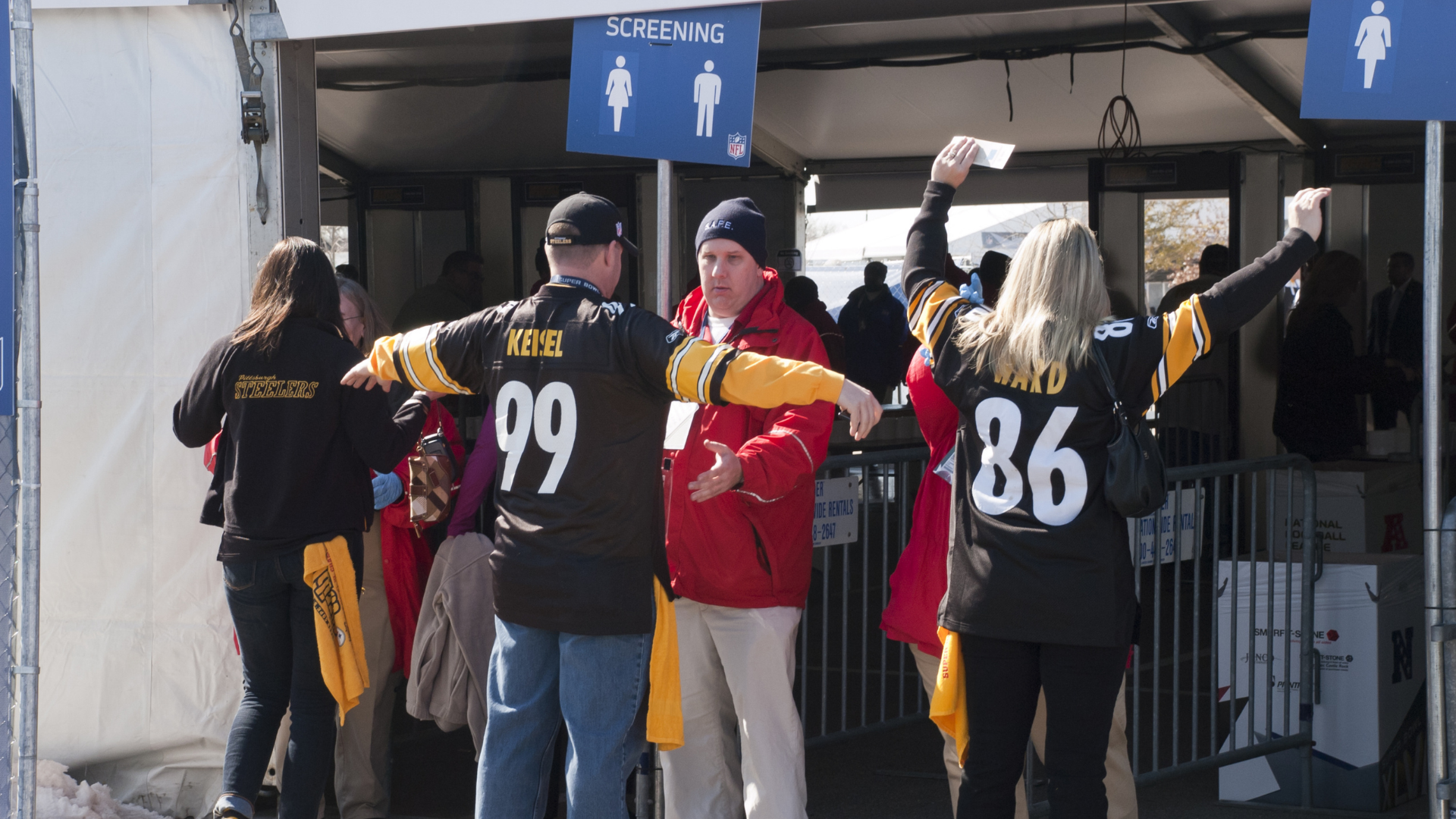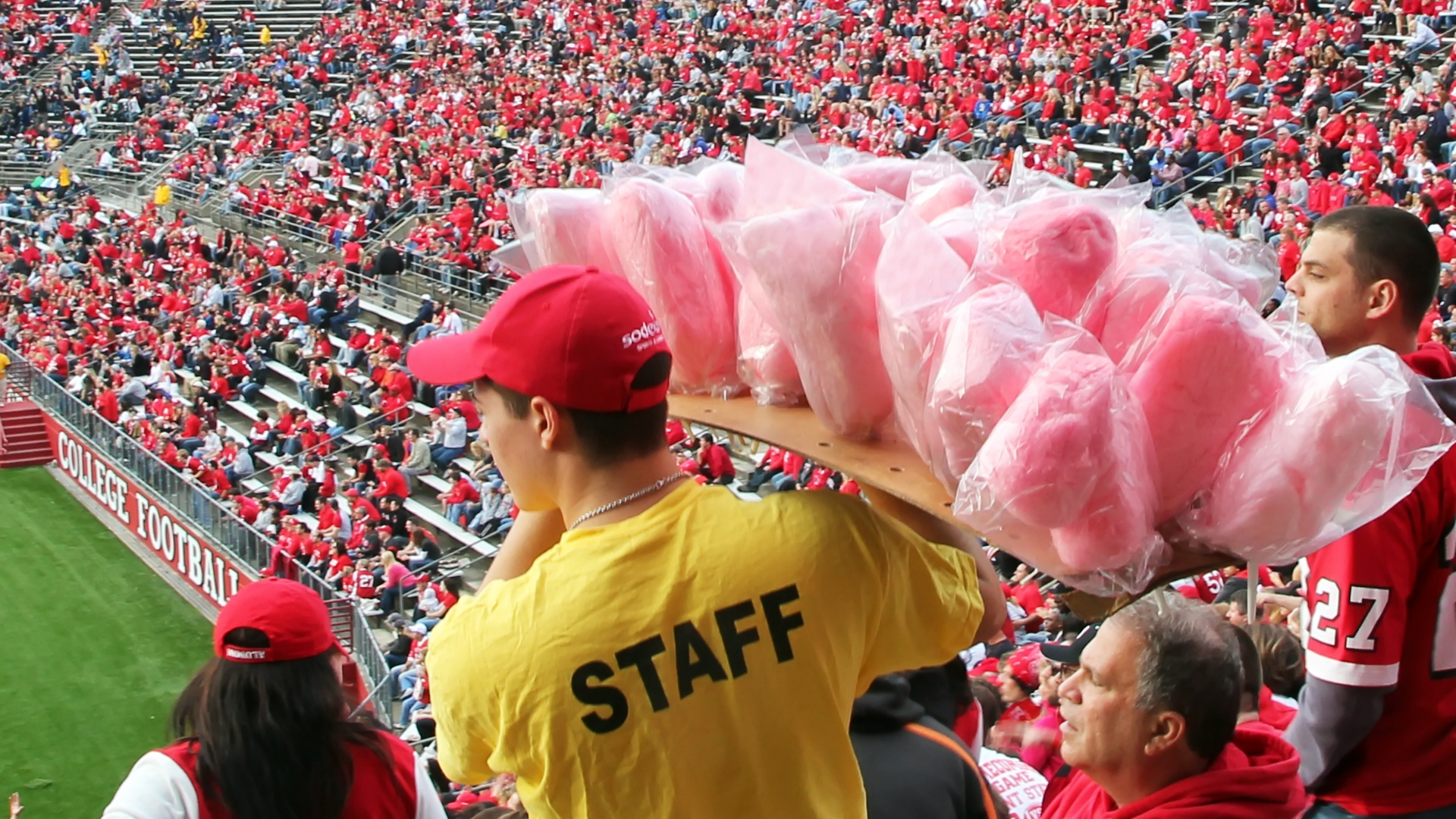4 Ways to Optimize Fan Experience in Stadiums Post-Covid
TABLE OF CONTENTS
Sports has been an industry hard hit by the Covid-19 pandemic. Though the National Football League (NFL) ran last season it was attended by fewer people than ever before, with just 2.5 million visitors over the whole period, a number that pales in comparison to the 17.3 million annual average the NFL saw come through doors from 2014-19.
With vaccines being rolled out cross-country, and businesses reopening everywhere, the industry now faces the reverse problem - instead of empty stalls, the prospect of fans re-entering premises in droves.
What can conferences and leagues do to accommodate fans safely and successfully? And when all those feet are back in stands, what can be done to ensure their experience is of the highest standard, to drive repeat attendance and season ticket sales?
Here are four things to consider when looking to optimize fan experience post-Covid.
1. Maintaining consistency of brand
Your brand is your identity - it’s how the public perceive you and the way you differentiate yourself from competition in order to build affinity, loyalty and ultimately, sell more. The foundation of a strong brand lies in repetition - creating a consistent experience with those that interact with you, over time.
Brand trust is the driving force behind buying decisions - satisfied fans attend 40% more in-person games every year and spend more per ticket. Fan perception of your brand is paramount to maintaining its integrity. When it comes to in-person sporting events, employees are your representatives on the ground - the public face of your brand.
It’s their behavior and interaction with fans that is responsible for creating a cohesive in-stadium experience that elicits the trust and familiarity that creates loyalty. And there’s a lot to be lost should they fall short - finding new customers can be up to 25 times more expensive than retaining existing ones.
“Employees often become the front line when marketing your business. Unhappy employees can make for unhappy customers and in this age of intense competition, customer loyalty is a great financial value that must be maintained in the long run to grow profits. ” — Correlation of morale, productivity and profit in organizations, Gbolahan Solomon Osho and Carolyn Ashae
Now there are a whole new set of behaviors, tools and processes your staff need to adopt - Covid-safe systems and ways of working - the risk of them providing a disparate fan experience is higher than ever. You may come up with innovative strategies to improve fan experience, but these initiatives fall flat if only 20% of your workforce know about them to enforce them
In order to minimize this risk as stadiums re-open at greater capacity, leagues need to arm legions of incoming staff with standardized information that ensures everyone is behaving in line with your brand guidelines and the latest government advice on sporting events in order to provide a consistent experience.
This is achieved by equipping staff - seasonal or otherwise - with necessary information that is personalized based on their role, no matter where they physically are in the stadium. This could be new product information, updated safety protocols or customer service tips.

2. Getting large numbers of people operational quickly
Where formal L&D initiatives do exist in the sports industry, they tend to be reliant on informal face-to-face debriefings.
This decades old structure needs refreshing in order to meet novel expectations of fans. Especially in the wake of the Covid-19 pandemic, where methods of operating have fundamentally changed, employees are particularly rusty after a year-long period out of work and need reskilling.
“The current crisis will require a larger skill shift than the 2008 financial crisis did. ” — McKinsey Institute
Prolonged leaves of absence make employees 500 times more likely to slip up on the job and when peoples’ health is on the line, there’s no room for mistakes.
With mass rehiring efforts and thousands required on the ground to serve every section of stadiums for events both large and small, leagues need to ensure that people are operational as quickly as possible prior to the season’s start, then performing to a gold standard that they’ve set over the remainder of the season.
Once the bare bones of “reboarding” training (that focuses on getting staff up to a minimum acceptable standard to begin providing services) is delivered, this needs to be consistently followed by timely information on e.g. section-specific best practice, to maintain performance levels.
This learning is best administered to employees digitally - ideally, via mobile. Why?
-
It’s accessible. You’re reaching people where they already spend time and can access easily - 80% of the world’s population use smartphones and we check them an average of 221 times per day.
-
It’s brief. While staff working in stands don’t have time to sit at a computer and complete 40 minute educational courses, they will undoubtedly have access to a mobile device, and have a minute or two spare to complete a short, engaging lesson, making it perfect for a workforce who are low on time and attention.
-
It’s standardized. When information is delivered in-person by an instructor it is likely the quality and contents will differ from session-to-session, and vary even more from instructor-to-instructor, resulting in inconsistent performance as levels of knowledge vary between one employee to the next.
-
It can be scaled. Another inefficiency of face-to-face learning is that it’s not scalable. When have 30,000 working for you, it is no longer feasible to gather them in a room to provide critical updates. Mobile enables you to easily communicate critical information to large numbers of people at once.
3. Making staff, players and fans feel safe
Prior to Covid-19, Deloitte carried out a study of 15,000+ fans across leagues, to understand which factors, if any, had the greatest impact when it came to making or breaking fan’s in-stadium experience.
They found a “core four” set of expectations that were prerequisites for building a base of loyal, engaged fans who attend game after game. Alongside a good atmosphere, view and high quality game, fans' experience was greatly determined by how safe, comfortable and clean they judged the stadium to be.
If this was the case even before Covid, then fans’ expectations regarding stadiums’ Health & Safety standards will have only intensified. 72% have indicated that they are unwilling to return at all, until certain vaccination thresholds have been reached.
And the hesitance is not hard to understand. Following an abrupt reopening last fall, many teams found themselves hit by Covid-19 outbreaks, causing several college and professional games to be rescheduled or cancelled. And cancellations, while costly and inconvenient, are the mildest consequence a team could face as a result of an uncontrolled Covid-19 outbreak.
When the mere act of congregating in large groups poses a health risk - to players, coaches, staff and fans - it is of utmost importance that everyone involved is up to speed with, and abiding by new safety processes and protocols. Only when employees are confident about their safety, can they inspire fans to be also.
And with best practice regarding Covid Health & Safety constantly evolving, it’s also important that the updates can be relayed to your staff as they unfold, and communicated with ease.

4. Creating accountability with analytics
It’s one thing to provide information necessary to ensure safety and elevate fan experience, it’s another to know that it’s being absorbed and acted on.
More and more, industries are looking for accountability - to be able to verify that people have understood the information they have spent time compiling and distributing. Both to be able to vouch that employees are compliant in the event of legal action, and to justify the cost of training to senior leadership.
Remote training provides easy access to dashboards that give insight into knowledge levels across your workforce. This puts you at an advantage by enabling you to identify where your weak links lie.
Rather than taking a stab in the dark at what people might need to know, it empowers you to make data driven decisions - to understand what you need to provide your weakest links with, in order to bridge any gaps in knowledge and improve their performance.
Perhaps most importantly, accessing data also enables you to be more strategic - to analyze the impact of your Learning & Development efforts. This numbers-led approach is essential to adopt in order to calculate the Return on Investment of training and measure the impact of any learning delivered.
The takeaway...
Prior to the pandemic, fans spent $50 billion in stadiums each year. Fan experience isn’t to be taken lightly - 86% of people will pay more for a better experience. Placing emphasis on improving yours post pandemic will improve upselling, customer satisfaction and retention.
But nostalgia alone can’t be relied on to drum up excitement and delight returning fans. On one level, fans need to be reassured that stadiums are taking the necessary precautions by seeing certain systems in place. For example - staggered entry, effective management of foot traffic, routing systems to limit face-to-face interaction, and so on.
But ultimately, all the Covid-safe infrastructure and hand sanitizing stations in the world aren’t enough to eliminate lingering uncertainty and build back the in-stadium experience to its pre-Covid strength. It’s having an informed, confident workforce with high morale on the ground that will make all the difference.
In order to meet fans’ new expectations in a new normal, leagues should look to solutions that will ensure their employees are in the know, compliant and providing a consistent (and exceptional) brand experience.
eduMe is a mobile-based remote training tool used by leading companies across 6 continents to improve and analyze their peoples’ performance. By delivering role-relevant information directly to the mobile devices of groups or individuals, companies’ workforces are able to access the knowledge they need to succeed, wherever they are.
At the height of the pandemic, we helped brands like Uber successfully relaunch, and get millions of drivers and delivery partners engaged, informed and back on roads, safely providing 5-star service to customers again. Think we could help you? Put your details in below for a quick, no strings attached tour of our product 👇
Join 10,000+ frontline leaders
Subscribe to ‘Training the Frontline’ and get weekly insights sent straight to your inbox.

